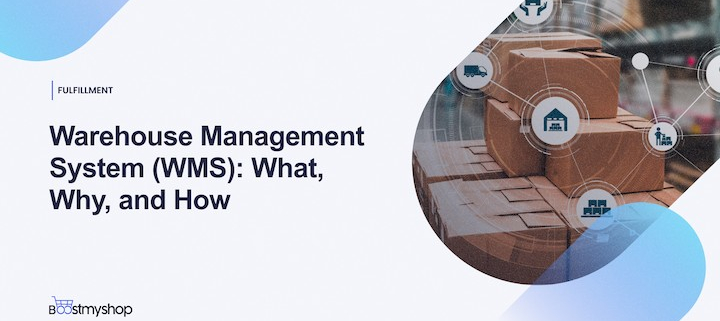Warehouse Management System (WMS): What, Why, and How
Warehouse Management refers to the control and seamless execution of everyday activities within a warehouse-like ordering inventory, tracking it, receiving it, relocating it, and using or selling them. Though Warehouse Management can be termed simple, it is full of complex operations that need utmost attention. A Warehouse Management System can be leveraged by businesses, big or small, to function efficiently with just the right resources.
The operations run on multiple levels, and a single mistake can become costly. Imagine a warehouse handling thousands of inventory items, calculating the order quantities, organizing shelf spaces, checking the due dates, ensuring the correct delivery schedule, restocking and reporting the returned goods, and uncountable other tasks that are carried out daily. Mistakes tend to happen. Such complexities can be handled with ease using Warehouse Management System.
What is a Warehouse Management System?
A warehouse management system (WMS) is a software application that supports the day-to-day operations in a warehouse. It can control and track inventory, optimize order preparations (in the case of ecommerce), stock levels, and improve customer satisfaction while saving time and money.
A WMS provides detailed visibility across almost all forms of the fundamental warehousing processes: receiving, put-away, storage, picking, packing, and shipping because all the data and information related to the warehouse is in the cloud. Hence, the warehousing data can be accessed from anywhere at anytime which is a huge advantage for businesses that need to keep track of their inventory levels and orders regularly.
Why do we need a Warehouse Management System?
A WMS is a necessity because it can handle the following complexities, which are prone to have mistakes if managed manually:
Managing warehouse space: Real estate/warehouse space is a critical asset that should be used in the best possible way. This means enhancing storage systems, as well as racking and pallet patterns. WMS can help to optimize the layout, locate , provide empty locations to put away inventory, provide the best possible path for goods to move around, etc.
Calculating inventory: One of the biggest benefits of using a WMS is that it can help improve inventory accuracy. With a WMS in place, you can keep track of inventory levels in real-time, so you always know exactly what’s in stock. This can help reduce stock-outs and ensure that you have the right products on hand at all times.
Scheduling deliveries and purchase orders: WMS tracks both the inbound and outbound deliveries. It can maintain both purchase and sales orders. WMS can schedule delivery dates automatically by responding to the orders placed.
Managing fluctuations in product demand: WMS can help businesses pre-order or back-order automatically with respect to customer demand. Businesses may sell seasonal items and WMS will help in inventory management by forecasting the customer demand.
Managing returned/damaged orders: A package may return if the product doesn’t satisfy the customer or if the item in the package is damaged. WMS provides functionalities to track such orders and report to vendors to refund or replace the orders.
How to choose a WMS?
There are a few key things to remember when choosing a Warehouse Management System (WMS).
The first is to make sure that the WMS will integrate with your other business systems. A good WMS will have pre-built integrations with popular enterprise resource planning (ERP) and transportation management systems (TMS) or least possibilities for API integrations. Having an integrated Order Management System is an added advantage.
The second thing to consider is the user interface (UI) and user experience (UX). A good WMS will have a modern, intuitive UI that is easy to use. It should also offer a good UX, with features like drag-and-drop and context-sensitive help.
The third thing to consider is the scalability of the WMS. As your business grows, you will need a WMS that can scale up to meet your needs. Make sure to ask about scalability when you are evaluating different WMS solutions.
Finally, you should consider the cost of the WMS. There are a variety of pricing models, so be sure to understand how the WMS you are considering is priced. You should also ask about hidden costs, such as support or maintenance fees.
Few features to look out for while choosing a WMS:
- A robust, detail-rich, customizable dashboard
- Bar and QR code scanning and printing
- Customizable reports
- Low stock alerts
- Device compatibility
The future of warehouse management systems is looking really, really, promising. With skyrocketing ecommerce economy and the advancement of technology, there are many new and innovative ways to manage and store inventory. The introduction of robotics is helping the warehousing industry to march towards absolute automation. Robots and drones in warehouse management, WMA integration with mobiles and wearable wireless computer devices, and smart forklifts are some next-generation features to look forward to.







